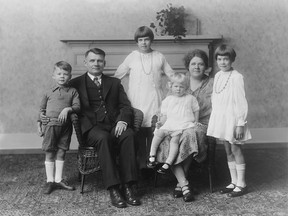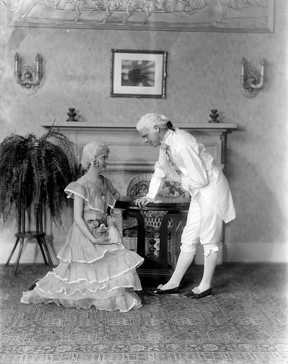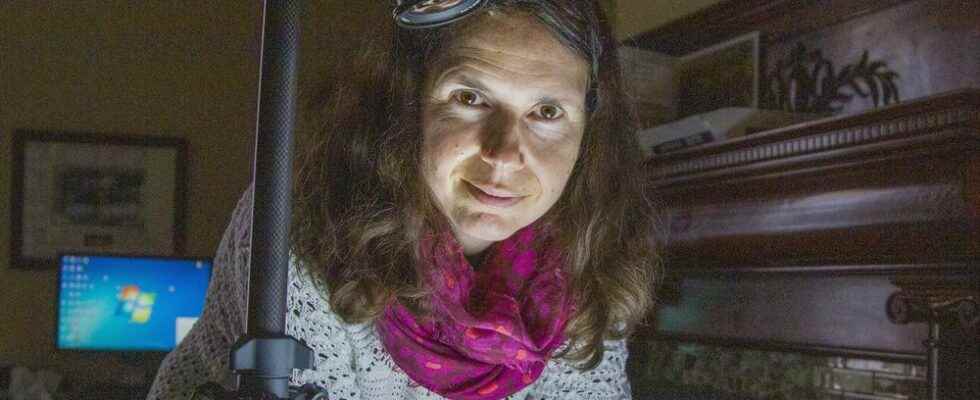A treasure trove of images from almost 100 years ago is seeing the light of day thanks to a federal government grant.
Almost 2,000 glass plate negatives from the former Walker Studio were discovered in the mid-1990s by a resident who lived in an apartment above a dentist’s office at West and Albion streets. The building was once home to Walker Studio, described in a 1927 Expositor article as specializing in commercial photography and artistic portraiture.

The glass plates ended up with Murray Angus, whose family operated Angus Jewelers on King Street in downtown Brantford, after he spoke to dentist Dr. Ron Scott about retrieving them.
“At some point in the 1940s, when it was no longer Walker Studios, someone put an addition on” the building, said Angus, speculating that workmen dumped the boxes of glass plate negatives through joists before laying down a new floor.
“I called my little, skinny nephew, Trevor Nelson, who was about 12 at the time and said, ‘I have this little adventure for you.’”
Angus and friend Wayne Hunter, a local historian, fashioned a cardboard apron for the lad to wear as he shimmied around a crawl space amid shards of broken glass to retrieve almost 2,000 glass plate negatives.
Angus arranged to make some prints in the darkroom at North Park Collegiate, but couldn’t print them all.
“I didn’t want a thousand portraits of people I didn’t know.”
After keeping the negatives for years, a move to a new home prompted Angus to donate them to the Brant Museum and Archives on Charlotte Street.
Nathan Etherington, the museum’s program and community co-ordinator, said the glass plates represent a lot of local people.
“Business owners and people we don’t know and have never had pictures of before,” said Etherington. “It sparks interest in people: Where did they live and work in Brantford? And what did it tell us about the city?”

The museum obtained at $15,000 grant from the federal Department of Canadian Heritage to digitize the negatives.
“We wouldn’t be able to do it without this,” Etherington noted.
Once the project is complete, the images will be available online to view through a database called Artifacts Canada.
“Some of the plates have an identification number, as well as the name of the people on the plate,” Etherington said. “We also received a ledger from the studio, and I’m able to look up the name by the ID number.”
In cases where the identity of the subjects can’t be determined, Etherington said the museum plans to share the images on social media.
“Hopefully, the community will be able to provide some additional information so that these people aren’t lost to history.”
Brantford photographer Anca Gaston has taken on the task of photographing the 5×7-inch and 8×10-inch glass negatives on a light box. The images are then inverted into a positive photograph using Adobe Photoshop software.
According to the Oregon State University Library, silver gelatin-coated dry plate negatives were the first economically successful and durable photographic medium, used widely between 1873 and the late 1920s.
Gaston shared an image of an unidentified young blond girl on social media. A friend recognized the girl as her mother.
“It’s really quite fascinating,” she said.
“I’ve always liked portraits. I am struck by how impeccable their hair and clothing were.”
